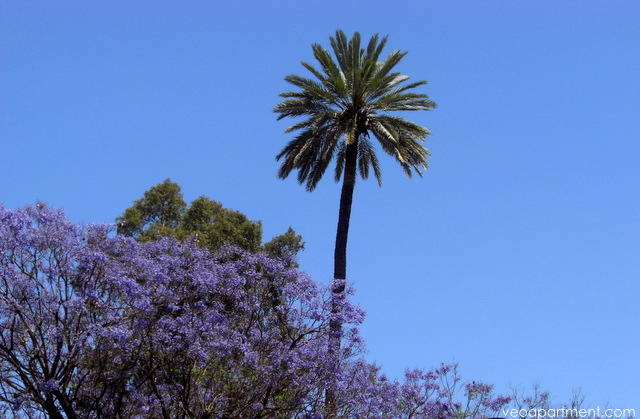 jacaranda trees in blossom
jacaranda trees in blossom
With the equinox less than a fortnight away, the last week has seen a definite shift from winter to spring in southern Spain. It’s not as if winter is really tough here, of course, but the days are short and the nights chilly, and the blue skies and sunshine are harbingers of the year’s reawakening.
Spring has always been a good time to come to Seville. For a start, the weather is near perfect (as in most places the changing of the seasons can bring a little unpredictability), warm enough for shorts, sandals and T-shirts, but without the sweat and exhaustion inducing heat that will kick in during June. It’s the season for eating al fresco, strolling through the parks, gardens and charming squares with which Seville abounds, or relaxing on the terrace of your apartment with a siesta-time cocktail.
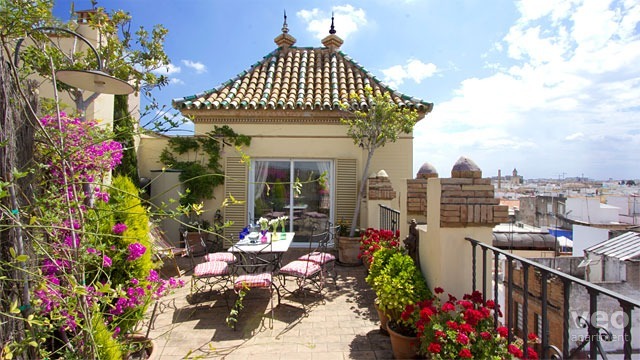 flowering plants on sunny Macarena Terrace
flowering plants on sunny Macarena Terrace
Early spring, around mid-March, is also the time for one of Seville’s best (and free) attractions, for this is orange-blossom season. The orange trees (around 30,000 of them) are decorated with the delicate white flowers of the azahar, and for around three weeks the air is filled with one of the most delightful scents known to mankind.
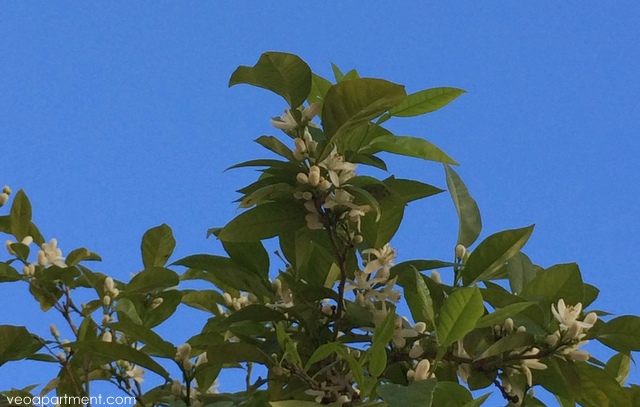 azahar – aka orange blossom
azahar – aka orange blossom
The colours of spring are everywhere in the city, which is vibrant with flowers and blossoms of every hue. Particularly worth looking out for are the blossom of the almond trees, and in June, just when you thought it was all over, the purple of the jacaranda erupts for a couple of weeks, a blaze of glory to finish the season.
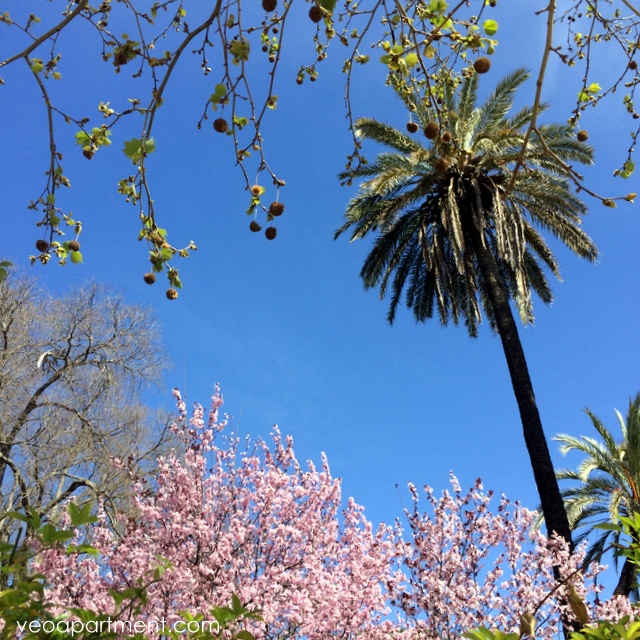 almond blossoms in Maris Luisa Park
almond blossoms in Maris Luisa Park
Seville is justly famous for its two Spring Festivals too, the first deeply religious, and the second its “have a good time” party week.
Semana Santa, Holy Week, leading up to Easter weekend, sees the streets full of processions with statues of the Christ and the Virgin Mary being carried to the Cathedral, huge numbers of penitents and Nazarenos in their pointed hoods carrying crosses or long candles, the smell of incense and the distinctive brass band Semana Santa music. Being a spring and rebirth festival flowers again figure prominently. Religious observance has declined, but the processions still draw huge crowds (especially the overnight processions on Thursday through to Good Friday morning), and are a moving and emotional experience. The celebrations in Seville are said to be the largest and most elaborate in the world, and are worth seeing even for the non-religious. They also say there are two types of Sevillanos – those that watch all the processions, and those that leave town for the week.
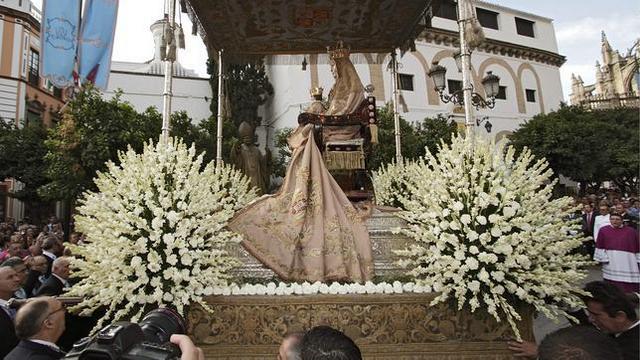 flower-festooned procession float – photo courtesy of ABC.es
flower-festooned procession float – photo courtesy of ABC.es
Two weeks later it’s the April Fair, La Feria de Abril. The modern fair grew out of an older horse and cattle fair, and during the day this is still evident in the horse and carriage parades. But the primary purpose nowadays is to dress up in your flamenco finery, put a flower in your hair, drink lots of rebujito (a mix of dry sherry and 7up), and dance the night away. The main venue is on a purpose built area of small marquees on the edge of town, but the carriages, horses and polka dot dresses can be spotted anywhere in town. April Fair is also the main bullfighting season, when the upper crust can be found eyeing each other up outside the bullring (a kind of Spanish Ascot) before the main event.
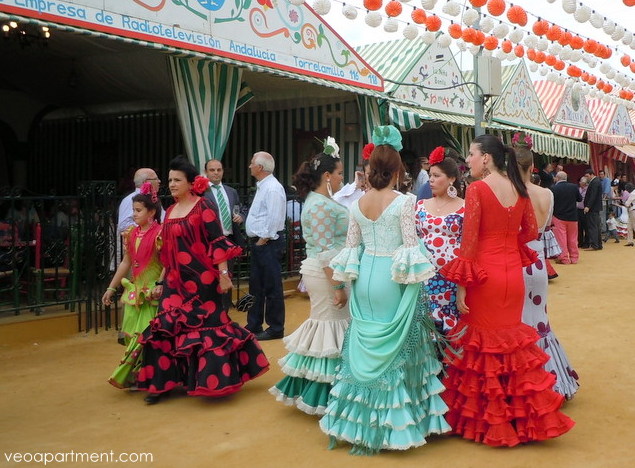 women at the Seville fair with “flowers” in their hair
women at the Seville fair with “flowers” in their hair
More than any other time of year the spring is when Seville is at its most alive and colourful, and the chance to visit and experience its unique atmosphere is not to be missed.